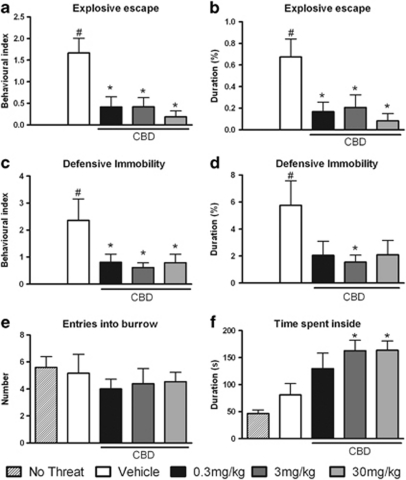Figure 5.
Inside-burrow behaviors. Non-threatened mouse behaviors and the effects of intraperitoneal administration of vehicle or cannabidiol (CBD) at 0.3, 3, or 30 mg/kg on the behavioral index (BI) (a) and duration (b) of explosive escape, the BI (c) and duration (d) of defensive immobility, the number of entries (e) into the burrow and the duration (f) of time spent inside by mice during the confrontation with the wild constrictor snake after a 3-day habituation period in the arena. Columns represent the mean and bars the SEM, n=11–12 per group. #P<0.05 when compared with the group not submitted to any threatening situation (no-threat); *P<0.05 when compared with the vehicle-treated group. BI=(100 × number of behavioral responses)/(time in seconds spent outside or inside the burrow).

